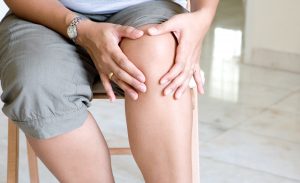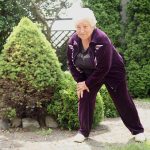
Painful knee osteoarthritis is linked to higher mortality risk in women compared to hand osteoarthritis. Osteoarthritis is a progressive form of arthritis which worsens over time. Osteoarthritis damages the articular cartilage and the joints. Knee osteoarthritis, specifically, is becoming a growing problem as the population continues to grow old.
Advertisement
Women are typically worse off with knee osteoarthritis compared to men and in large part this is due to knee anatomy differences between men and women along with kinematics, previous knee injury, and hormonal influences.
Women also experience more debilitating pain compared to men and men are more likely to be prescribed total joint arthroplasty compared to women.
Painful knee, but not hand osteoarthritis, in women linked with risk of mortality
 A study presented at the World Congress on Osteoporosis, Osteoarthritis and Musculoskeletal Diseases examined the risk of early mortality associated with painful knee due to osteoarthritis. The researchers found that painful knees due to osteoarthritis is associated with higher overall mortality and linked with increase mortality from cardiovascular. The findings were independent from other known risk factors linked with mortality.
A study presented at the World Congress on Osteoporosis, Osteoarthritis and Musculoskeletal Diseases examined the risk of early mortality associated with painful knee due to osteoarthritis. The researchers found that painful knees due to osteoarthritis is associated with higher overall mortality and linked with increase mortality from cardiovascular. The findings were independent from other known risk factors linked with mortality.
The study collected data from a cohort of middle-aged women followed up for 24 years. The effects of both hand and knee osteoarthritis pain were evaluated.
The researchers compared a group of women with knee osteoarthritis or hand osteoarthritis with mortality of women without osteoarthritis. Women with knee pain osteoarthritis had a two-fold higher risk of overall mortality and a three-fold higher risk of cardiovascular mortality. The same association was not seen in women with hand pain osteoarthritis.
Lead author Dr. Stefan Kluzek said, “These findings suggest that any self-reported knee pain in osteoarthritis, as opposed to hand pain, seems to be a crucial factor leading to early cardiovascular mortality and is likely to be linked with decreased mobility. Radiographic osteoarthritis without pain is not affecting long-term mortality. More research is needed to understand how people adapt to knee pain, and how this leads to cardiovascular impairment.”
Osteoarthritis in women, common causes and factors
 As mentioned women develop osteoarthritis more so then men and there are many gender differences which contribute to this added risk. Biology, genetic predisposition, and hormones are all main causes of osteoarthritis for women.
As mentioned women develop osteoarthritis more so then men and there are many gender differences which contribute to this added risk. Biology, genetic predisposition, and hormones are all main causes of osteoarthritis for women.
Biology: Women, unlike men, hold a child for nine months and give birth which makes their lower body more elastic then men. Although this is necessary for child-bearing it also causes parts of the body to move around more which makes them less stable and prone to injury.
Genetics: Osteoarthritis has been found to run in families and there appears to be a genetic link among women. Women whose mothers had osteoarthritis are at higher risk to develop it themselves.
Hormones: Females hormones have been shown to play a role in osteoarthritis as it can affect cartilage which sits between the bones and acts as a cushion to allow smooth movement. Estrogen typically protects cartilage from inflammation but when estrogen drops after menopause this protection reduces thus putting cartilage at risk.
Advertisement
Obesity, too, is a risk factor for osteoarthritis in women as much research has shown that women who are obese or even overweight have greater wear and tear on the joints and cartilage which increases the risk of osteoarthritis. For every pound gained, that translates to an additional three pounds on your joints. In order to lower your risk of osteoarthritis, even if you may have uncontrollable factors against you, it’s a good idea to keep your weight in check.
Manage osteoarthritis pain with these tips
If you can’t control your risk factors for osteoarthritis at least you can better manage the pain and the condition by following these tips:
- Lose weight: as mentioned weight can be a contributing factor to the onset of osteoarthritis and it can make it far more painful. Maintaining a healthy weight will ensure you experience less pain.
- Eat a healthy diet: eating well not only helps you lose weight but it provides your bones with essential nutrients they need to stay strong.
- Exercise: even though you’re in pain it may seem difficult to exercise but exercise not only makes you stronger but it improves your cardiovascular health, boosts mood and eases pain. Begin with light-impact exercises like swimming and water aerobics as there is less stress on your joints.
- Continue to live your life: don’t let osteoarthritis ruin your life – continue to enjoy the hobbies you love and do whatever it takes to keep your mind off the pain associated with osteoarthritis.
- Make adjustments: using assistive devices like a cane can help ease pain associated with osteoarthritis.
- Use cold and hot packs: applying cold and heat to painful areas can help reduce inflammation and ease pain. Knowing when to take breaks and rest, too, is beneficial when managing osteoarthritis.
By working closely with your doctor and following these helpful tips, you can gain control of your osteoarthritis and not let it control your life.
